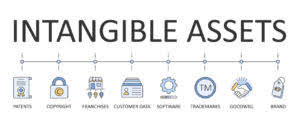The scholarship foundation’s details fit well with what donors expect to hear from the organization. Operating revenue includes funds from donations, ticket sales, product sales, etc. Operating expenses are https://nyweekly.com/business/accounting-services-for-nonprofits-benefits-and-how-to-choose-the-right-provider/ your employees’ salaries and the amount spent on equipment and supplies. Your nonprofit Income Statement shows the year-over-year income and spending trends.
Understanding Expenses in the Statement of Activities
This involves recording revenue and expenses from both the current and previous periods to show how the organization’s net assets have changed. By using gross receipts to record revenue and detailing cash inflows and outflows, including payments on long-term investments like buildings, nonprofits can offer a clear picture of their financial activities. This transparency not only helps in making strategic decisions but also ensures that liabilities, such as car loans and mortgages, are accounted for.
Structure of the nonprofit statement of activities
As a nonprofit professional she has specialized in fundraising, marketing, event planning, volunteer management, and board development. Restricted Revenue shows funds with donor-placed restrictions on how or when you can spend the money. You can include all restricted funds together or segment them by donation type. It underscores the nonprofit’s dedication to maximizing impact and efficiently using its funds to achieve its goals. This detailed classification underpins effective financial management, demonstrating an organization’s commitment to stewardship and accountability.
Want to stay on top of your nonprofit’s income? Download our FREE income statement template for Excel here.
The IRS will give you copies of all financial statements the nonprofit has submitted up to a three year period. Demonstrating that a significant portion of resources is funneled directly into program services reinforces the organization’s effectiveness and integrity in the eyes of donors, funders, and the public. The accrual basis of accounting is highly recommended for nonprofits, as it records transactions at the moment revenues are earned or expenses are incurred, irrespective of cash movement. Financing activities in the Statement of Cash Flows include transactions related to borrowing and repaying debt, as well as obtaining and repaying grants or contributions restricted for long-term purposes.
Important Aspects of Nonprofit Taxes
They review, approve, and provide oversight on financial statements and budgets. There are three different parts to any nonprofit cash flow statement that should be worked into a Non Profit Financial Statement Template. The investing section covers any money the nonprofit has spent for investment or other longer term assets. The financing section is a report of any funds that have been borrowed and any loan amounts that have been paid back. The operating section includes any other information about cash flow at the nonprofit that was not included in the other two sections of the cash flow statement.
- Nonprofit financial statements are documents that provide a summary of the financial activities and position of a nonprofit organization.
- Implementing robust internal controls is essential for preventing fraud and ensuring the integrity of financial data.
- They provide context, explain accounting methods, and clarify any financial mysteries.
- This overview will delve into the main nonprofit revenue types, revenue recognition policies, conditional vs. unconditional revenues, and what revenues signify for organizations.
- The structure and amount of these dues can vary widely depending on the organization’s objectives, the value proposition for members, and the targeted demographic.
- After that time elapses, they can be released from restriction and used as the nonprofit sees fit.
The differences between for-profit and not-for-profit financial statements
You can also check out nonprofit simple sheet to create you financial statements in Microsoft Excel Format, which is easier to make. There are a lot of things you need to know of your nonprofit organization before making a financial personal statement of it. It needs to contain all of the income you get from funds and where are all the expenditures going.
- This is important for keeping the trust of donors, members, and the government.
- Think of it as a detailed story of how the organization earns and spends money to support its mission.
- If your nonprofit provides and charges people fees for their services, you can also report this revenue on your Statement of Activities.
- But if you’re spending more than you bring in for several periods in a row, you’re headed for trouble.
- We consider that there is a time restriction on the funds allowing only 1/3 of the donation to become unrestricted in a given year.
- This way, your leadership team, board members, and other stakeholders can have a better understanding of how your nonprofit generates and spends its cash from year to year.
- Charitable organizations must ensure that they allocate costs accurately to reflect the true nature of their expenditures.
- For nonprofits, this means making sure that the organization’s net assets are clearly shown and explained.
- Financial statements are one of the most important tools that the leaders of a nonprofit organization can use to ensure the future health of the entity.
- To avoid corruption in any way, you should secure a financial statement that can show where all the money is going.
These funds are integral for covering operational expenses and investing in areas crucial for achieving the organization’s mission. Conversely, unrestricted funds are contributions without donor-imposed restrictions and can be allocated at the discretion of the nonprofit’s management. These funds offer invaluable flexibility to the nonprofit, allowing it accounting services for nonprofit organizations to meet various operational needs including, but not limited to, administrative expenses, program funding, and contingency planning. A Statement of Activities includes revenue and expenses during a nonprofit’s reporting period (a fiscal or calendar year) and gives an overview of the changes to an organization’s net assets during that time. Permanently restricted net assets are funds that have permanent donor-imposed restrictions. Nonprofits must carefully manage and steward these funds to ensure their long-term sustainability and impact.
Contact Our Nonprofit Financial Statements Specialists Today!
- Unrestricted funds offer the greatest flexibility, used at the organization’s discretion.
- By doing so, they can demonstrate their financial stability and attract potential donors and funders.
- Unrestricted revenue is the most flexible type of revenue and can be used for any purpose within the organization’s mission.
- The non-profit income statement is a map that shows where the water (money) flows in the garden.
- If someone donates for a particular cause, like a scholarship or research, that money has to go exactly where it’s intended.
- This also helps set realistic financial goals, ensure compliance, and build trust with donors and stakeholders by demonstrating fiscal responsibility.
We handle the hard part of finding the right tax professional by matching you with a Pro who has the right experience to meet your unique needs and will manage your bookkeeping and file taxes for you. In this section, it is important to pay attention to the liquidity of the assets. Liquidity refers to how quickly an asset can be converted into cash without significant loss in value. Cash is the most liquid asset, while property and equipment may take longer to convert into cash.








